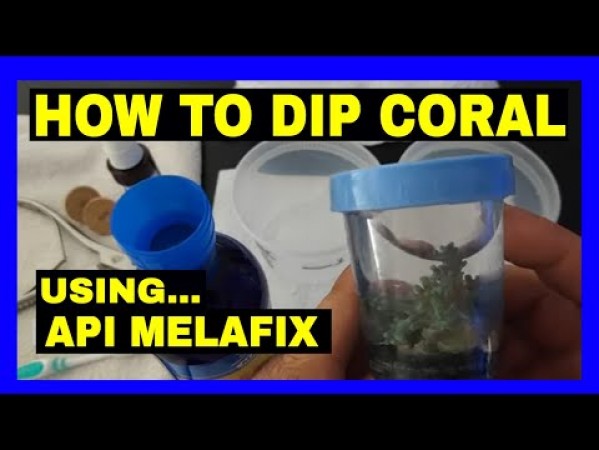- Name:
Giant Cup Mushroom
(View AKA's) - Family: Discosomatidae
- Species: Mushroom Amplexidiscus
- Scientific Name: Amplexidiscus spp
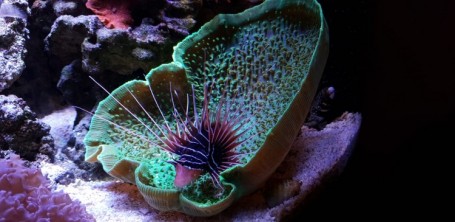

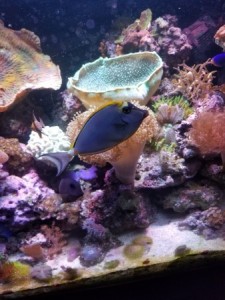
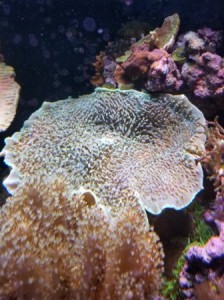
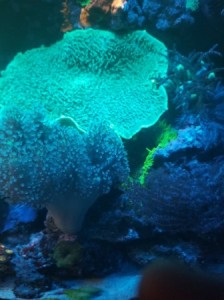
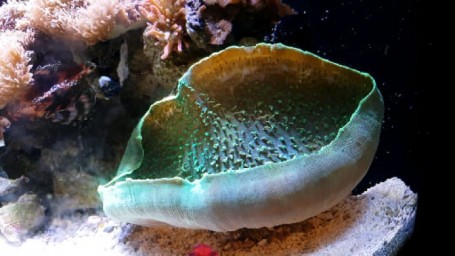
General info about Giant Cup Mushroom
The Giant Cup Mushroom outer edge is almost translucent and does not have verrucae. They commonly reach diameters of 8-10" in an aquarium but can reach up to 18". They can change the shape of their disk within a short period.
The Giant Cup Mushroom does excellent in a predatory reef tank with large fish which will not pick on the mushroom. Some caution should be taken if you have smaller fish or invertebrates in the same aquarium. The Amplexidiscus species is known to eat fish smaller than 6" long. Small fish should not be kept with this species, especially fish that like to perch on corals like blennies, clownfish, gobbies, dragonets, hawkfish or slow moving fish. These fish and week fish due to illness are likely to fall victim to the Giant Cup Mushroom.
They are sometimes confused with Carpet anemones by hobbyist and Clownfish. When Clownfish think they found a new host, they are quickly stung, and the disk quickly closes to consume them.
The Giant Cup Mushroom will sometimes close up only leaving a small hole open which some fish may think is a cave and the moment they enter the hole they are quickly stung and the disk closes up.
Once contact with the mushroom is made, its stinging cells immobilize the prey, and then it closes up within 3 seconds.
Suggested water change maintenance should include 10% weekly water change or 20% bi-weekly water changes.
Giant Cup Mushroom Diet & Nutrition
The Giant Cup Mushroom needs moderate light and also needs to be feed if they do not get enough food they can detach and start floating around the tank to try to attach somewhere else to try to get a better food source. If this happens, you can place them back where you had them and try to feed more frequently.
If the Giant Cup Mushroom spits the food out, then there could be an issue with the amount of light that it is getting or your water quality.
When feeding, the mouth of the Giant Cup Mushroom remains closed until the entire oral disc is closed. The mouth then opens and consumes the prey and will close again before opening up again.
They enjoy feeding at night, so right after lights out. If you want them to multiply quickly feed them as often as they will close up around the food. Interestingly, their feeding response will not happen with any touch, but only the touch of prey, indicating a chemical reaction is needed, not just any touch from your finger or an object.
Flow / Lighting Requirements for Giant Cup Mushroom
The Giant Cup Mushroom are naturally found in shallow waters there for they can tolerate higher intensity lights. This is one of the mushrooms that can be placed on the top portion of your tank but also does well in the middle of the tank.
The shallow waters where they are also found experience shifts between low flow and turbulent waters. So this mushroom can even tolerate higher flows but does need a break from the high flows to keep it healthy.
Giant Cup Mushroom Origin
The Amplexidiscus Genus are found in shallow waters that shifts between low flow and turbulent waters, in areas of subtidal coral reef lagoons in the Indo-Pacific. They are found alone, and at times in clusters. They like to attach them self on live rock or dead coral.
Caution Should be Taken with Giant Cup Mushroom
The Giant Cup Mushroom is an aggressive mushroom that will eat small fish (6" long and smaller). Proper spacing must be observed in relation to other coral species in the tank to prevent it from stinging them.
How to Acclimate Giant Cup Mushroom
The Giant Cup Mushroom is a marine species. Therefore, salinity must be maintained thoroughly at 1.023 to 1.025 specific gravity.
Stinging Tentacles on Giant Cup Mushroom
Like most mushrooms, the tips of it disk have stinging cells to sting nearby corals but this mushroom also has sting cells on its disk that can sting and immobilize prey to consume them. The Giant Cup Mushroom can consume small pray 6" long or smaller.
Original Detail
| Name | Species | Family | Scientific Name | More Detail | Added by |
|---|---|---|---|---|---|
| Giant Cup Mushroom | Mushroom Amplexidiscus | Discosomatidae | Amplexidiscus spp | The Giant Cup Mushroom outer edge is almost translucent and does not have verrucae. They commonly reach diameters of 8-10" in an aquarium but can reach up to 18". They can change the shape of their disk within a short period. The Giant Cup Mushroom does excellent in a predatory reef tank with large fish which will not pick on the mushroom. Some caution should be taken if you have smaller fish or invertebrates in the same aquarium. The Amplexidiscus species is known to eat fish smaller than 6" long. Small fish should not be kept with this species, especially fish that like to perch on corals like blennies, clownfish, gobbies, dragonets, hawkfish or slow moving fish. These fish and week fish due to illness are likely to fall victim to the Giant Cup Mushroom. They are sometimes confused with Carpet anemones by hobbyist and Clownfish. When Clownfish think they found a new host, they are quickly stung, and the disk quickly closes to consume them. The Giant Cup Mushroom will sometimes close up only leaving a small hole open which some fish may think is a cave and the moment they enter the hole they are quickly stung and the disk closes up. Once contact with the mushroom is made, its stinging cells immobilize the prey, and then it closes up within 3 seconds. Suggested water change maintenance should include 10% weekly water change or 20% bi-weekly water changes. |
PalaciosAn |



